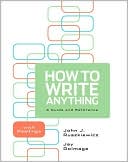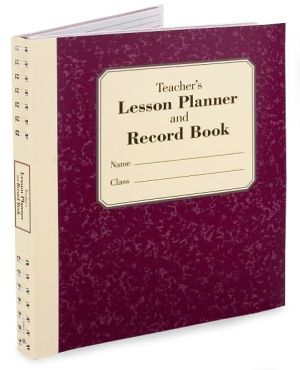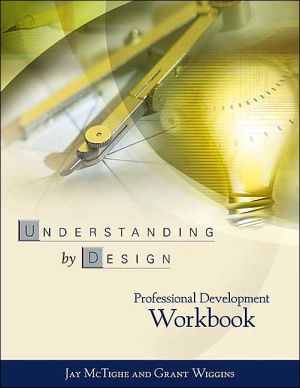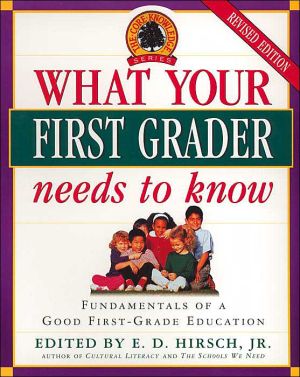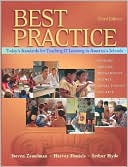How to Write Anything: A Guide and Reference with Readings
Search in google:
Designed to be clear and simple, How to Write Anything re-imagines how texts work, with support for students wherever they are in their writing process. The Guide, in Parts 1 and 2, lays out focused advice for writing common genres, while the Reference, in Parts 3 through 9, covers the range of writing and research skills that students need as they work across genres and disciplines. Intuitive cross-referencing and a modular chapter organization that’s simple to follow make it easy for students to work back and forth between the chapters and still stay focused on their own writing. Now also available in a version with 50 fresh, additional readings from a wide range of sources, organized by the genres covered in the guide. The result is everything you need to teach composition in a flexible, highly visual guide, reference, and reader.Introducing Author Talk: Watch our video interview with Jay Dolmage.
I. Genres 1. Narrative Understanding personal narratives Tell a story. Make a point – usually. Observe details closely. Reflection: Peggy Noonan , from "We Need to Talk" Exploring purpose and topic Brainstorm, freewrite, build lists, and use memory prompts to find a topic for a personal narrative. Choose a manageable subject. Understanding your audience Select events that will keep readers engaged. Pace the story effectively. Tailor your writing to your intended readers. Finding and developing your materials Consult documents. Consult images. Trust your experiences. Creating a structure Consider a simple sequence. Build toward a climax. Use images to tell a story. Choosing a style and design Don’t hesitate to use first person – I. Use figures of speech such as similies, metaphors, and analogies to make memorable comparisons. In choosing verbs, favor active rather than passive voice. Use powerful and precise modifiers. Use dialogue to propel the narrative and to give life to your characters. Develop major characters through language and action. Develop the setting to set the context and mood. Examining models Literacy narrative: Strange Tools, Richard Rodriguez Memoir: Check. Mate? Miles Pequeno (student) Graphic Novel excerpt: Persepolis, Marjane Satrapi Assignments 2. Reports Understanding reports Present information. Find reliable sources. Aim for objectivity. Present information clearly. Informative Report: "Uranus’ second ring-moon system," Exploring purpose and topic Answer questions. Review what is already known about a subject. Report new knowledge. Understanding your audience Suppose you are the expert. Suppose you are the novice. Suppose you are the peer. Finding and developing your materials. Base reports on the best available sources. Base reports on multiple sources. Fact check your report. Creating a structure Organize by date, time, or sequence. Organize by magnitude or order of importance. Organize by division. Organize by classification Organize by position, location, or space. Organize by definitional structure. Organize by comparison/ contrast. Organize by thesis statement. Choosing a style and design Present the facts cleanly. Keep out of it. Avoid connotative language. Cover differing views fairly, especially those you don’t like. Pay attention to page design. Examining models Informative Report: Gene Altered Foods: A Case Against Panic, Jane Brody Academic Report: Inner and Outer Beauty, Annie Winsett (student) Visual Report: Blood Cells for Sale, Emily Harrison Assignments 3. Argument Understanding arguments Offer levelheaded and disputable claims. Offer good reasons to support a claim. Respond to opposing claims and points of view. Use language strategically-and not words only. Argument for Change: "College Rankings or Junk Science?" Robert Kuttner Exploring purpose and topic Learn much more about your subject. State a preliminary claim, if only for yourself. Qualify your claim to make it reasonable. Examine your core assumptions. Understanding your audience Consider and control your ethos. Consider your own limits. Consider race or ethnicity. Consider income or class. Consider gender or sexual orientation. Consider religion or belief. Consider age. Finding and developing your materials List your reasons. Assemble your hard evidence. Cull the best quotations. Find counter arguments. Consider emotional appeals. Creating a structure Spell out what’s at stake. Make a point or build toward one. Address counterpoints when necessary, not in a separate section. Hold your best arguments for the end. Choosing a style and design Invite readers with a strong opening. Write vibrant sentences. Ask rhetorical questions. Use images and design to make a point. Examining models Argument from Personal Experience: "Protecting What Really Matters," Shane McNamee (student) Argument about a Public Issue: Uncle Sam and Aunt Samantha, Anna Quindlen Visual Argument: Vampire Energy, from Good magazine Assignments 4. Evaluation Understanding evaluations Make value judgments. Establish and defend criteria. Offer convincing evidence. Offer useful advice. Product Review: "2007 Toyota Camry Hybrid," Erik B. Johnson Exploring purpose and topic Evaluate a subject you know well. Evaluate a subject you need to investigate. Evaluate a subject you’d like to know more about. Keep an open mind. Understanding your audience Write for experts. Write for a knowledgeable general audience. Write for novices. Finding and developing your materials. Decide on your criteria. Look for hard criteria. Argue for criteria that can’t be measured. Stand by your values. Gather your evidence. Creating a structure Choose a simple structure when your criteria and categories are predictable. Choose a focal point. Examine differences. Choosing a style and design Use a high or formal style. Use a middle style. Use a low style. Present evaluations visually. Examining models Music Review: Green Day, American Idiot, by Rob Sheffield Cultural Evaluation: A Public Service Campaign: Rock the Vote: Useful Harm? Scott Standley (student) Cultural Evaluation: Movie Poster Art: Zorro Posters Assignments 5. Causal analysis Understanding causal analysis Don’t jump to conclusions. Appreciate the limits of causal analysis. Offer sufficient evidence for claims. Cause and Effect Analysis: "Unplugging ads, Not Conversations," Tobias Salinger (student) Exploring purpose and topic Look for a subject you know well. Look for an issue new to you. Examine a local issue. Look for a subject with many dimensions. Tackle an issue that seems settled. Understanding your audience Create an audience. Write to an existing audience. Finding and developing your materials Understand necessary cause. Understand sufficient cause. Understand precipitating cause. Understand proximate cause. Understand remote cause. Understand reciprocal cause. Understand contributing factor. Come to conclusions thoughtfully. Don’t simplify situations or manipulate facts. Creating a structure Explain why something happened. Explain the consequences of a phenomenon. Suggest an alternative view of cause and effect. Explain a chain of causes. Choosing a style and design Consider a middle style. Adapt the style to the subject matter. Use appropriate supporting media. Examining models Cause and Effect Analysis: "Safe at Any Speed," editors of the Wall Street Journals Exploratory Causal Essay: "What's Really Behind the Plunge in Teen Pregnancy?" Liza Mundy Causal Analysis of Culture: Politics of Pants, Charles Paul Freund Assignments 6. Proposal Understanding proposals Define a problem. Target the proposal. Consider reasonable options. Make specific recommendations. Make realistic recommendations. Proposal for Change: "How Binging Became the New College Sport and Why It Would Stop If We Lowered the Drinking Age," Barrett Seaman Exploring purpose and topic Look for a genuine issue. Look for a challenging problem. Look for a soluble problem. Look for a local issue. Understanding your audience Write to people who can make a difference. Rally people who represent public opinion. Finding and developing your materials Define the problem. Examine prior solutions. Make a proposal. Defend the proposal. Figure out how to implement the proposal. Creating a structure Choosing a style and design Use a formal style. Use a middle style, when appropriate. Pay attention to elements of design. Examining models Proposal Defining a Problem: "Disappearing Act," Michael Gurian Academic Proposal: "Mandatory HIV Testing," Ricky Patel (student) Visual Proposal: Carchitecture, Tyler Brett and Tony Romano Assignments 7. Literary analysis Understanding literary analysis Begin with a close reading. Make a claim or observation. Present works in context. Draw on previous research. Use texts for evidence. Follow conventions. Literary Analysis: Distinguishing the Other in Two Works by Tolstoy," Melissa Miller (student) Exploring purpose and topic Choose a text you connect with. Choose a text you want to learn more about. Choose a text that you don’t understand. Understanding your audience Clearly identify the author and works you are analyzing. Define key terms. Don’t aim to please professional critics. Finding and developing materials Examine the text closely. Focus on the text itself. Focus on its meanings, themes, and interpretations. Focus on its authorship and history. Focus on its genre. Focus on its influence. Focus on its social connections. Find good sources. Creating a structure Focus on a particular observation, claim, or point. Imagine a structure. Work on your opening. Choosing a style and design Describe action in the present tense. Provide dates for authors and literary works. Use appropriate abbreviations. Follow conventions for quotations. Cite plays correctly. Examining models Literary analysis of theme: "Insanity: Two Women," Kanaka Sathasivan (student) Comparison of two genres: "Size Doesn’t Matter: Brokeback Mountain," Liz Miller Photographs as Literary Texts: "Jobless on the Edge of Peafield, Imperial Valley, California," Dorothea Lange "Burrough Family Cabin, Hale County, Alabama," Walker Evans, "American Gothic," Gordon Parks Assignments 8. Rhetorical analysis Understanding rhetorical analysis Take words seriously. Make strong claims about texts. Mine texts for evidence. Make a difference. Rhetorical Analysis: "Ad Report Card," Seth Stevenson Exploring purpose and topic Choose a text you can work with. Choose a text you can learn more about. Choose a text with handles. Choose a text you know how to analyze. Understanding your audience Finding and developing your materials Consider the topic or subject matter of the text. Consider the audiences of the text. Consider its author. Consider its medium or language. Consider its occasion. Consider its contexts. Consider its use of rhetorical appeals Ethos Pathos Logos Creating a structure Develop a structure. Choosing a style and design Consider a high style. Consider a middle style. Make the text available to readers. Annotate the text. Examining models Rhetorical Analysis of an Argument: "A Mockery of Justice," Matthew Nance Rhetorical Analysis of Two Film Trailers: "The Die Hard Trailer: American Version Vs. International Version," Ryan Hailey (student) Rhetorical Analysis of a Cultural Trend: "They’re Soft and Cuddly, So Why Lash Them to the Front of a Truck?" Andy Newman Assignments II. Special Assignments 9. Essay examination Understanding essay exams Anticipate the types of questions you might be asked. Read exam questions carefully. Sketch out a plan for your essay(s). Organize your answer strategically. Offer strong evidence for your claims. Come to a conclusion. Keep your tone serious. Don’t panic. Model: Wade Lamb [student] Getting the details right Use transition words and phrases. Do a quick check of grammar, mechanics, and spelling. Write legibly or print. 10. Position paper Understanding a position paper Read the assignment carefully. Review assigned material carefully. Mine the texts for evidence. Organize the paper sensibly. Edit the final version. Model: Triumph of the Lens, Heidi Rogers [student] Getting the details right Identify key terms and concepts and use them correctly and often. Treat your sources appropriately. Spell names and concepts correctly. 11. Email Understanding email Explain your purpose clearly and logically. Tell readers what you want them to do. Write for intended and unintended audiences. Arrange your text clearly. Minimize the clutter. Keep your messages brief. Distribute your messages sensibly. Model: Informal Email Example Getting the details right. Choose a sensible subject line. Don’t hit send with without checking who will receive the message. Include an appropriate signature. Use standard grammar. Have a sensible email address. Don’t be a pain in the butt. 12. Business letter Understanding business letters Explain your purpose clearly and logically. Tell your readers what you want them to do. Write for an audience. Keep your letter focused and brief. Use a conventional form. Distribute copies of your letter sensibly. : Model: Rita Weeks (student ) Getting the details right. Use consistent margins and spacing. Finesse the greeting. Spell everything right. Photocopy the letter as a record. Don’t forget the promised enclosures. Fold the letter correctly and send it in a suitable envelope. 13. Résumé Understanding résumés Gather the necessary information. Decide on appropriate categories. Arrange the information within categories chronologically. Design the pages that are easy to read. Proofread every line in the résumé several times. : Résumé: Marissa Dahlstrom (student) Getting the details right Don’t leave unexplained gaps in your educational /work career. Be consistent. Protect your personal data. Think twice about posting your résumé on a job board. Consider having your résumés designed and printed professionally. 14. Personal Statement Understanding personal statements Read the essay prompt carefully. Be realistic about your audience. Gather your material. Decide on a focus or theme. Organize the piece conventionally. Try a high or middle style. Model: Internship Application, Michael Villaverde, (student) Getting the details right Don’t get too artsy. Cut the crap. Use common sense. Write the essay yourself. 15. Lab Report Understanding a lab report Follow instructions to the letter. Look at model reports. Respect the conventions of lab reports. Be efficient. Edit the final version. Model: "Synthesis of Luminol," Sandra Ramos (Student) Getting the details right Keep the lab report impersonal. Keep the style clear. Follow the conventions. Label charts, tables and graphs carefully. Document the report correctly. 16. Oral Report Understanding oral reports Know your stuff. Organize your presentation. Adapt your material to the time available. Practice your presentation. Model: Terri Sagatsume Getting the details right Use your voice. Use your body. Use humor. Use appropriate props. III. Ideas 17. Brainstorming Find routines that support thinking. Build lists. Map your ideas. Try freewriting. Use memory prompts. Google your ideas. Visual Tutorial: How to Browse for Ideas 18. Brainstorming with others Choose a leader. Begin with a goal and set an agenda. Set time limits. Encourage everyone to participate. Avoid premature criticism. Test all ideas. Keep good records. Agree on an end product. 19. Smart Reading Read to deepen what you already know. Read above your level of knowledge. Don’t get in a rut. Be curious. Read important texts very closely. Read to expose logical fallacies. Look for appeals to false authority. Look for dogmatism. Look for ad hominem attacks. Look for scare tactics. Look for either/or choices. Look for sentimental appeals. Look for bandwagon appeals. Look for hasty generalizations. Look for faulty causality. Look for equivocations and evasions. Look for straw men. Look for slippery slope arguments. Look for faulty analogies. 20. Experts Talk with your instructor. Take your ideas to the Writing Center. Visual Tutorial: How to Use the Writing Center Find local experts. Check with librarians. Chat with peers. 21. Writer’s Block Break the project into parts. Set manageable goals. Create a calendar. Limit distractions. Do the parts you like first. Write a zero draft. Reward yourself. IV. Shaping and Drafting 22. Thesis Write a complete sentence. Make a significant claim or assertion. Write a declarative sentence, not a question. Expect your thesis to mature. Introduce your thesis early in a project. Or state a thesis late in a project. Write a thesis to fit your audience and purpose. 23. Organization Sketch out a plan or sequence. Provide clear steps or signals. Divide items in a sequence consistently. Deliver on your promises. 24. Outlines Begin with scratch outlines. List key ideas. Look for relationships. Subordinate ideas. Decide on a sequence. Move up to an informal/topic outline. Prepare a formal outline. 25. Paragraphs Make sure paragraphs lead somewhere. Develop ideas adequately. Organize paragraphs logically. Design paragraphs for readability. Use paragraphs to manage transitions. 26. Transitions Use appropriate transitional words and phrases. Use sentence structure to connect ideas. Pay attention to nouns and pronouns. Use synonyms. Use physical devices for transitions. Read a draft aloud to locate trouble spots. 27. Introductions Announce your project Preview your project Provide background information Catch the attention of readers Set a tone Follow formulas when they are required Write an introduction when it’s ready 28. Conclusions Summarize your points Confirm your thesis and suggest implications Lead up to a point Finish dramatically 29. Titles Use titles to focus documents. Create titles that are searchable. Avoid whimsical or suggestive titles in academic and professional work. Capitalize and punctuate title carefully. V. Style 30. High, middle, and low style High Style Middle Style Low style 31. Inclusive and culturally sensitive style Pay attention to expressions that stereotype genders. Pay attention to expressions that stereotype races, ethnic groups, or religious groups. Treat all subjects with respect. Avoid sensational language. 32. Vigorous, Clear, Economical style Use strong, concrete subjects and objects. Avoid clumsy noun phrases. Avoid sentences with long wind-ups. Use action verbs when possible. Avoid strings of prepositional phrases. Don’t repeat key words close together. Avoid doublings. Turn clauses into more direct modifiers. Cut introductory expressions such as it is and there are when you can. Vary your sentence lengths and structures. Listen to what you have written. Cut a first draft by 25%—or more. VI. Revising and editing 33. Revising Your Own Work Revise to see the big picture. Does the project meet the assignment? Does the project reach its intended audience? Does the project do justice to its subject? Edit to make the paper flow. Does the organization work for the reader? Does the paper have smooth and frequent transitions? Is the paper readable? Edit to get the details right. Is the format correct right down to the details? Are the grammar and mechanics right? Is the spelling correct? 34. Peer Editing Peer edit the same way you revise your own work Be specific in identifying problems or opportunities. Offer suggestions for improvement. Praise what is genuinely good in the paper. Keep your comments tactful. Use proofreading symbols. VII. Research and Sources 35. Beginning Your Research Know your assignment. Find a challenging topic. Appraise your research resources. Distinguish between primary and secondary sources. Seek professional help. Come up with a plan. Resolve to keep a record of every source you examine. Prepare a topic proposal. 36. Finding Sources Don’t be intimidated by research tools. Learn to navigate the library catalog. Locate research guides. Identify the best database for your subject. Identify the best reference tools for your needs. Use online sources intelligently. 37. Doing Field Research Interview people who know something about your subject. Make careful and verifiable observations. 38. Evaluating Sources Preview source materials for their key features and strategies. Check who published or produced the source. Check who wrote the work. Consider the market for a source. Establish the currency of a source. Check the sources and documentation. 39. Reviewing and Annotating Sources Read to identify and distinguish claims, assumptions, and evidence. Annotate a source to be sure you understand it. 40. Summarizing Sources Prepare a summary to provide a useful record of a source. Use a summary to recap what a writer ha
